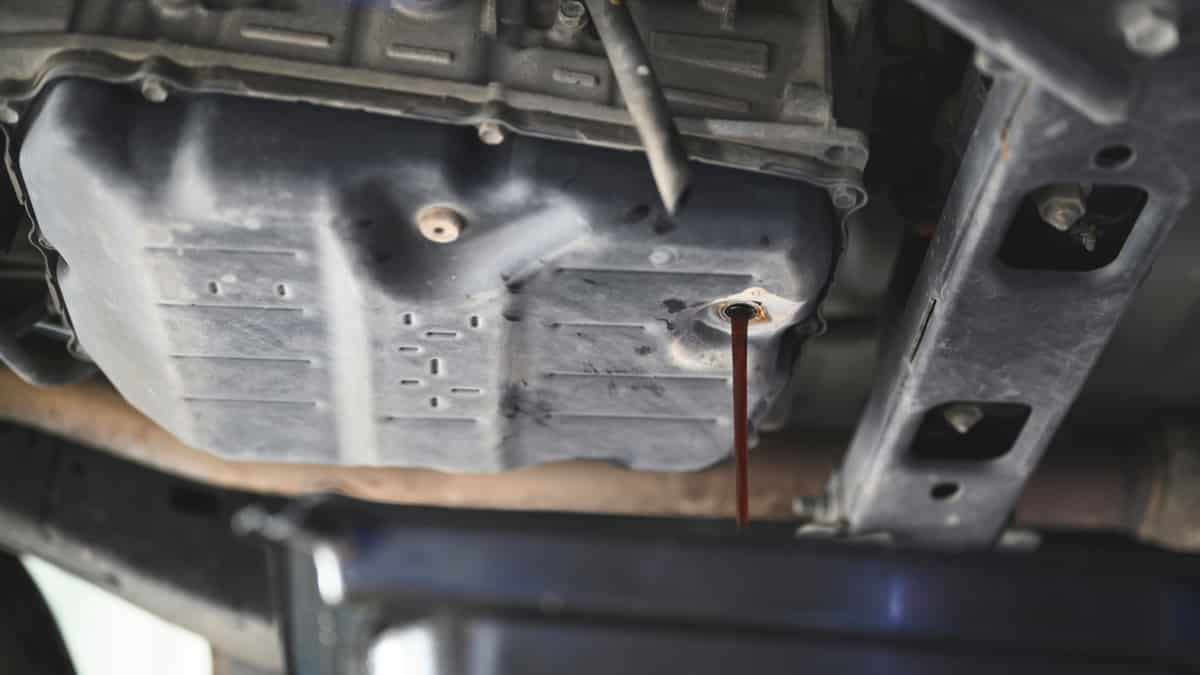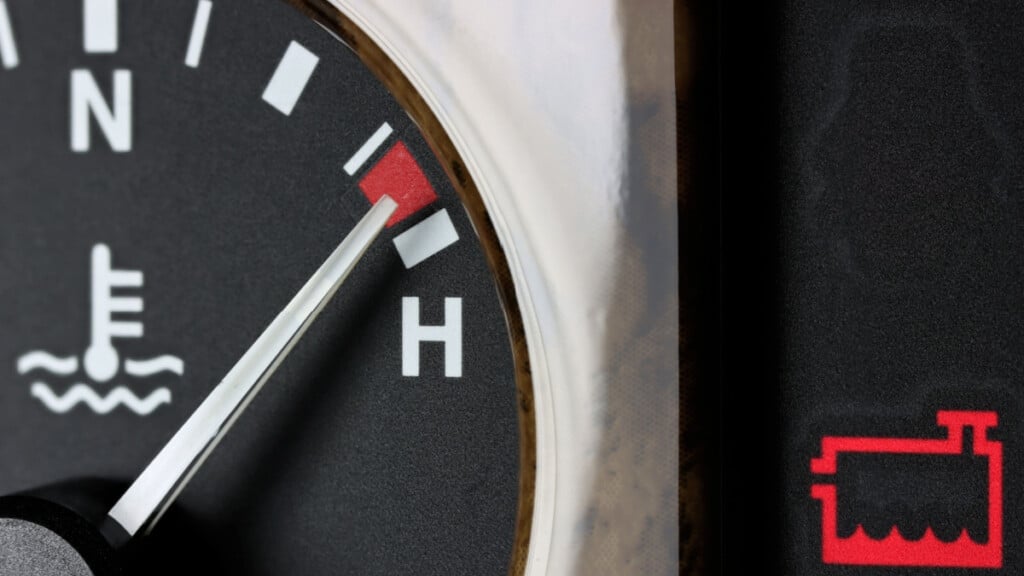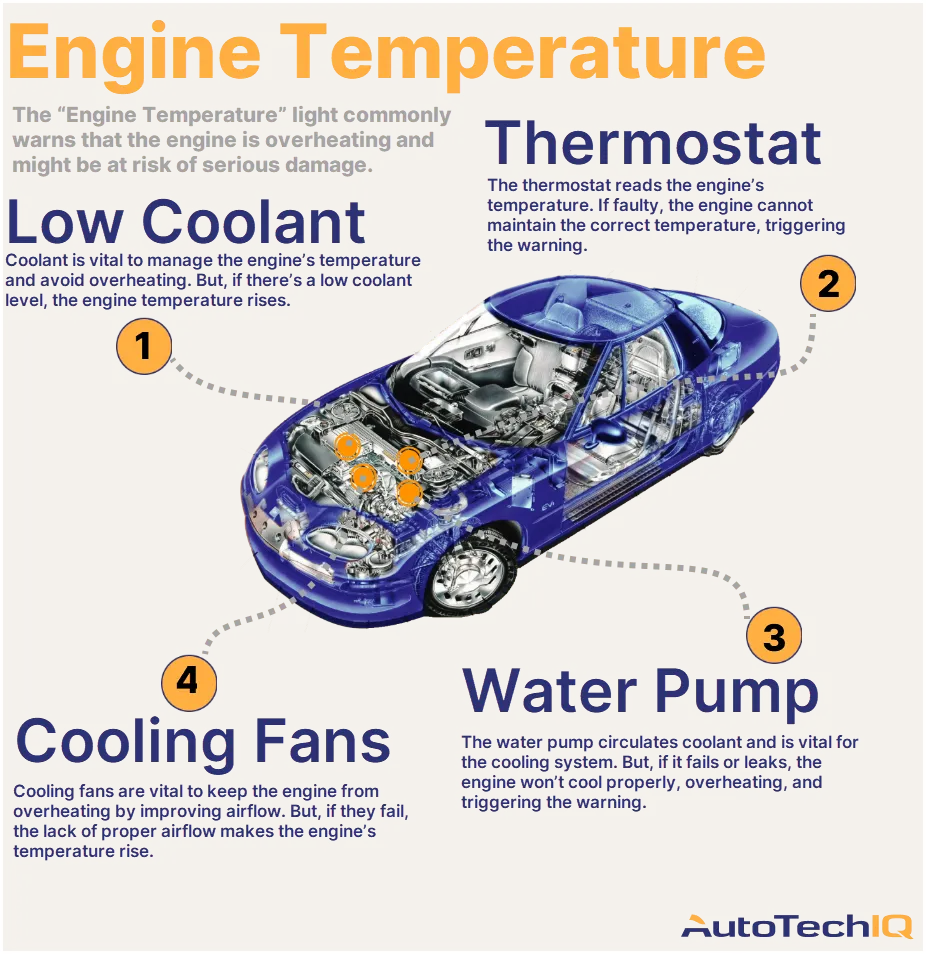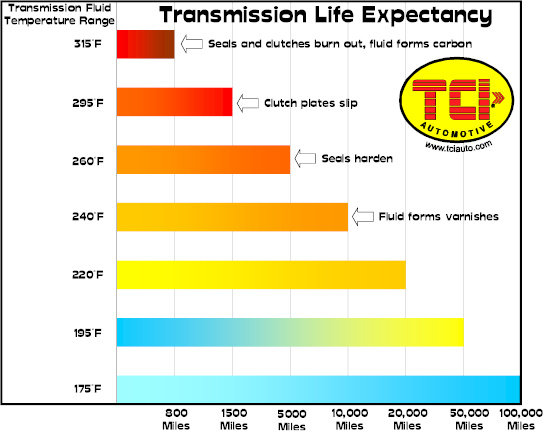What Transmission Temperature Is Considered Normal?

Transmission fluid is vital to keeping the transmission cool and functioning correctly. The temperature of the fluid is monitored by the computers to ensure there are no mechanical failures. So, what transmission temperature is considered normal and when should you start to worry?
We answer your top transmission temperature questions in this article. We look at the average temperatures and discuss the symptoms you should watch for. We also give you some tips to keep the transmission cooler. At the end of our article, we touch on some steps for prevention since that’s most important.
What Transmission Temperature Is Considered Normal?
Most modern automatic transmissions are meant to operate at temperatures between 175 and 225 degrees Fahrenheit. If it gets any hotter than this, there’s a mechanical problem that should be dealt with. With proper prevention, you can keep the transmission from getting too hot.
The transmission fluid gets the hottest when it is inside the torque converter. Temperatures can get over 350 degrees Fahrenheit, especially when under a major load.
The trouble with transmission fluid temperature is that most cars don’t have a special alert for overheating. There aren’t transmission temperature gauges on most vehicles. Instead, the Check Engine Light will come on or you will get a transmission warning if your car is equipped with one.
What Is a Normal Transmission Temp When Towing?
If you tow with your vehicle, you can expect the transmission to work harder. The additional drag and weight of the towed vehicle cause your transmission to work harder. As a result, the temperature of the transmission fluid will rise.
Still, it shouldn’t exceed the top limits of what’s normal. While it may hit 225 degrees Fahrenheit, it shouldn’t regularly get above that. If it does, you are causing more wear on the transmission than necessary.
How Do I Know If My Transmission Is Overheating?
Without a temperature gauge on the dashboard, you won’t know if the transmission is overheating unless you pay attention to the symptoms. Here are a few to watch for.
1. Transmission Warning Light

If your vehicle is equipped with a transmission warning light, this dashboard symbol will keep you informed. It’s designed to go off when there’s a defect or malfunction in the transmission. If your car doesn’t come with this, you may see the Check Engine Light instead.
Keep in mind that the transmission light doesn’t come on just because of overheating. It can also alert you when there’s low fluid, a shift interlock failure, a malfunctioning torque converter, a faulty valve body or an electrical malfunction. A complete diagnosis is needed to fix the problem.
2. Burning Smell
There are many malfunctions that can lead to a burning smell in your car. It could be a sign of an electrical malfunction or an overheating transmission.
Either way, it’s important that you don’t ignore this symptom. At worst, whatever is burning could start a fire, leaving you in serious trouble.
3. Trouble Shifting Gears
When the transmission fluid gets too hot, it doesn’t work as effectively as intended. Because the fluid must maintain a certain consistency, you could notice issues when the transmission shifts gears.
The clutches could start slipping or it may feel like it’s stuck in one gear. Either way, you should stop driving to troubleshoot the issue.
4. Grinding/Vibration
Transmission fluid has lubricating properties, similar to motor oil. When operating at its proper viscosity, it’s going to lubricate the gears and ensure that everything runs smoothly. However, when the fluid gets too hot, it can no longer lubricate properly.
What you are left with is grinding gears that make an awful sound. You may also notice an increase in vibration, especially while the transmission is shifting. The trouble with both of these symptoms is that damage may already be occurring. That’s why it’s important to take notice of earlier symptoms and stop driving as soon as you can.
5. Overheating Engine

When the transmission is overworked, you can bet the engine is working harder too. As a result, you may notice that the engine begins to overheat.
Once the engine temperature gets too high, serious damage can occur. Stop driving before a cracked cylinder head or blown head gasket occurs. The last thing you need is a damaged engine and transmission. Depending on the value of your car, it may end up in the junkyard after these issues.
What Are the Causes of High Transmission Temperature?
There are several reasons that the transmission can get too hot. Here are a few possible causes.
- Old, contaminated transmission fluid
- Low transmission fluid levels
- Leaking transmission cooler lines
- Worn seals or gasket
- Clogged transmission filter
- Overheating engine
- Overworking the transmission beyond its capacity
At the first sign of the transmission overheating, it’s important to take action. By ignoring the problem, you will only allow serious mechanical malfunctions.
How Do I Cool Down My Transmission?
Once you know the transmission is overheating, you want to pull over in a safe location. Don’t keep driving.
In some cases, you may be able to cool off the transmission by putting the vehicle in Neutral and revving the engine. Otherwise, you want to turn off the car until it is cooled off.
If you are towing too much or driving in extreme heat, find a way to take a load off of the vehicle. You don’t want to continue pushing the car too hard.
To reduce the problem in the future, you may want to put a transmission cooler on. This unique device helps when towing to keep the transmission cooler.
At worst, you may need to call a tow truck to get your vehicle to a local service station. You shouldn’t keep driving it with an overheated transmission because mechanical failure could occur. If you’ve ever priced a new transmission, you know how important it is to protect this vital part.
How To Prevent An Overheating Transmission
You know what causes the transmission to overheat, so it’s pretty simple to figure out the best ways to prevent the condition from occurring. Here are a few ways to protect the transmission.
- Check the fluid level regularly and top off when needed.
- Follow the recommended maintenance schedule for your transmission. Some transmissions are only meant to be maintained by a professional mechanic.
- Watch for leaks and have them repaired immediately.
- Install an aftermarket transmission cooler if you push your vehicle to the limits.
- Replace the transmission filter at the appropriate times.
- Try not to tow heavy loads regularly.
- Avoid driving in stop-and-go traffic during excessive heat conditions.
- Take your car to a qualified mechanic if there are any problems.
If you take care of your transmission, it will provide you with many years of driving.
Does Idling Warm Up The Transmission?
Yes, it does, but you don’t need to warm up the transmission before driving. Today’s vehicles are designed to start and hit the road. Continuing to idle the engine can lead to more damage and should be avoided unless necessary.
How do I keep my transmission cool?
It’s important to have regular maintenance, as directed by the manufacturer. The transmission fluid and filter should be changed at regular intervals. You also want to have a mechanic look at the transmission if you notice any irregularities. Even the smallest leak can turn into something major if neglected.
What is a low transmission temperature?
When it’s extremely cold outside, the transmission fluid temperature can drop below normal levels. Not only does the fluid contract, but the viscosity also changes, leaving the transmission unprotected. You may have trouble shifting gears or notice a delay in performance during the winter.
Can you drive with a hot transmission?
No, you should stop driving if the transmission begins to overheat. Continuing to drive with an overheated transmission can lead to permanent failure. Instead, pull over and let the transmission cool down before trying again. If it continues to overheat, have a mechanic look at it.
At what temp does transmission fluid burn?
Your car shouldn’t burn any transmission fluid under normal conditions. Also, transmission fluid isn’t flammable. However, it is combustible, so it will ignite if it’s heated above the flashpoint. Most transmission fluid flashpoints are between 302°F and 383°F (150 – 195°C).
There’s a normal situation for everything that occurs with cars, and the transmission temperature is no different. Knowing that the temperature of the transmission fluid should remain between 175 and 225 degrees Fahrenheit helps you figure out if there’s a problem before damage occurs.
If you are watching for the possible symptoms and think the transmission is overheating, it’s best to have a professional check the vehicle. If it hasn’t been maintained properly, a simple fluid and filter change may be all that’s needed. Otherwise, there could be damage done that needs to be resolved before you start driving again.
Understanding Car Transmission Temperature: Keeping Your Vehicle Running Smoothly

Maintaining optimal car transmission temperature is crucial for the longevity and performance of your vehicle. Overheating can lead to serious damage and costly repairs, while running too cool can reduce efficiency. Understanding the factors that influence transmission temperature, recognizing warning signs, and taking preventative measures can help ensure a smooth and reliable driving experience. This article delves into the intricacies of transmission temperature, offering insights into its significance and how to manage it effectively.
Table of Contents
Why Transmission Temperature Matters
The transmission is a complex system responsible for transferring power from the engine to the wheels. This process generates friction and heat, which can degrade transmission fluid and damage internal components if not properly managed. High transmission temperatures can lead to:
- Reduced transmission fluid lifespan
- Increased wear and tear on gears and bearings
- Slipping gears
- Complete transmission failure
Ideal Transmission Temperature Range
The ideal operating temperature for most automatic transmissions is between 175°F (80°C) and 220°F (104°C). Exceeding this range, especially temperatures above 250°F (121°C), can significantly reduce the lifespan of the transmission fluid and increase the risk of damage.
Factoid: For every 20°F (11°C) increase above the ideal temperature, the lifespan of the transmission fluid can be reduced by half.
Factors Affecting Transmission Temperature
Several factors can influence transmission temperature, including:
- Driving conditions: Towing heavy loads, driving in stop-and-go traffic, and climbing steep hills can all increase transmission temperature.
- Vehicle age and maintenance: Older vehicles may have less efficient cooling systems, and neglected maintenance can lead to increased friction and heat.
- Transmission fluid level and condition: Low fluid levels or contaminated fluid can reduce cooling efficiency and increase friction.
- Ambient temperature: Hot weather naturally increases the operating temperature of all vehicle components.
Recognizing the Signs of Overheating
Being able to identify the symptoms of an overheating transmission is crucial for preventing serious damage. Common signs include:
- Slipping gears: The transmission may hesitate or struggle to shift gears.
- Rough shifting: Gear changes may feel jerky or harsh.
- Unusual noises: Whining, clunking, or grinding sounds may indicate transmission problems.
- Burning smell: A burning odor can indicate that the transmission fluid is overheating.
- Transmission warning light: Some vehicles have a specific warning light for transmission problems.
Factoid: Many modern vehicles have a transmission temperature gauge. Monitoring this gauge can provide valuable insights into the health of your transmission.
Preventative Measures and Maintenance
Taking proactive steps to maintain your transmission can help prevent overheating and extend its lifespan:
- Regularly check transmission fluid levels: Ensure that the fluid is at the proper level and in good condition.
- Follow recommended maintenance schedules: Change the transmission fluid according to the manufacturer’s recommendations.
- Consider installing a transmission cooler: Especially if you frequently tow heavy loads or drive in demanding conditions.
- Avoid aggressive driving: Minimize harsh acceleration and braking to reduce stress on the transmission.
- Have your transmission inspected regularly: A qualified mechanic can identify potential problems before they become serious.
FAQ: Frequently Asked Questions About Transmission Temperature
Q: What is the ideal transmission temperature?
A: The ideal operating temperature is generally between 175°F (80°C) and 220°F (104°C).
Q: What happens if my transmission overheats?
A: Overheating can damage the transmission fluid and internal components, leading to reduced performance, slipping gears, and eventual failure.
Q: How often should I change my transmission fluid?
A: Consult your vehicle’s owner’s manual for the recommended fluid change interval. Factors like driving habits and conditions can influence the frequency.
Q: Can I check my transmission fluid myself?
A: Yes, most vehicles have a transmission fluid dipstick. Refer to your owner’s manual for the location and procedure.
Q: What is a transmission cooler and do I need one?
A: A transmission cooler is a device that helps dissipate heat from the transmission fluid. It’s recommended for vehicles that frequently tow heavy loads or operate in demanding conditions.
Author
Rachel Moreno is an automotive journalist and enthusiast with a decade of experience covering the latest trends in car technology, maintenance, and driving culture. Raised in a family of mechanics, she learned to rebuild engines before she had her driver’s license. Today, she combines her technical insight with a storyteller’s voice to make automotive topics accessible and engaging for all readers. At HawkEye Automotive, Rachel focuses on real-world advice, DIY maintenance tips, and honest reviews of parts and tools. Whether you’re a seasoned gearhead or a new driver learning the ropes, her goal is to help you make confident decisions about your vehicle — without the jargon and guesswork.
Related posts:
- The Market for Cars Without Engine For Sale
- How to clean light interior in car
- Revolutionizing the Road: A Deep Dive into Car Engine Technologies
- Bath and Body Works Car Air Freshener: A Deep Dive into Scenting Your Ride
https://mechanicbase.com/transmission/normal-operating-temperature-for-an-automatic-transmission/https://hawkeyeautomotive.com/transmission/understanding-car-transmission-temperature-keeping-your-vehicle-running-smoothly/


